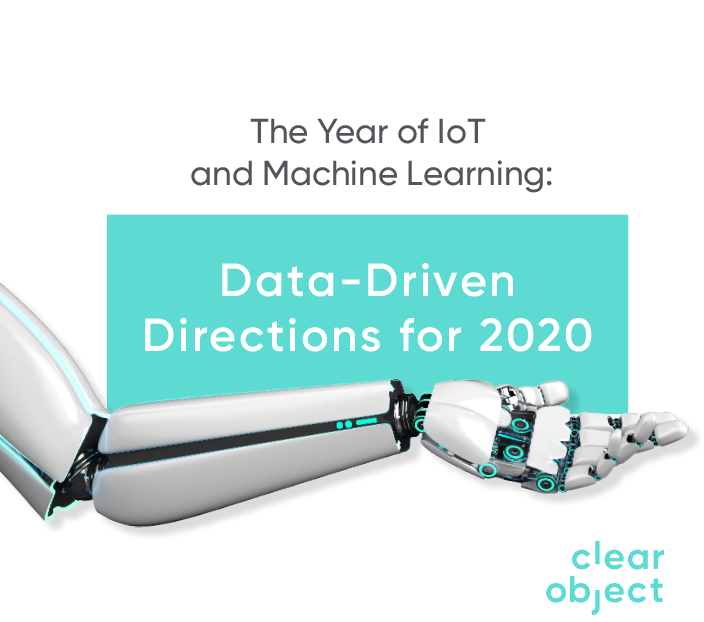Within the next four years, digital transformation spending is expected to surpass $6 trillion. Consider 2019 a springboard, a year in which enterprises globally were projected to spend more than $1 trillion on IoT projects, machine learning, data analytics and other digital transformation initiatives. The biggest spenders? Industries for process manufacturing and discrete manufacturing, with transportation close behind.
The investments these and other industries are making are fueling the growing use of IoT devices and machine learning solutions — which make operations and data analytics more efficient and customer experiences more positive. IoT and machine learning trends therefore are on the upswing.
In navigating this path going forward, industries and enterprises alike will find a growing number of data-driven directions in front of them.
As we see it, in 2020, nine of these directions will have the strongest impacts.

1. Big data grows to ginormous data
With more IoT edge devices sending waves of information to the cloud, ginormous data will start to make big data look small.
2. IoT and machine learning are no longer future technologies
Instead, call them “necessary.” To make sense of data in smarter ways and larger volumes, IoT and ML will focus less on core technologies and more on intelligent ones.
3. Data as a Service (DaaS) for data analytics
in 2020, every person in the world will create 1.7MB of data per second. All this data will change how industries use information for decision-making, and DaaS will make it readily available.
4. The rise of progressive web apps (PWAs)
PWAs are smaller in size, they load faster, they’re more secure, and users access them the same way as apps from app stores. Say hello to a better user experience.
5. Prescriptive analytics will transform business intelligence
Suggested actions and potential outcomes of those actions give business leaders foresight, not just insight. As more tools become available, prescriptive analytics will become a holy grail.
6. AI will create more jobs than it eliminates
Yes, AI is expected to eliminate 1.8 million jobs in 2020. Less publicized, though, is that the technology will also create 2.3 million new jobs during the same period.
7. Machine learning will increasingly augment human work
Rather than automating tasks and replacing human work, ML will be used to augment human work. It will make work processes more efficient, and employees more productive.
8. Robotic process automation (RPA) will lead the automation movement
Combined with AI, RPA applications will go from simply collecting and processing data to performing in-depth data analytics and making contextual decisions.
9. Autonomous vehicle training will become more cultural
By state, province, country and territory, self-driving vehicles are still learning idiosyncrasies such as “Turn right on red.” That makes these rules as cultural as they are endless.
In the Year of IoT and Machine Learning, enterprises will use data in greater volumes to improve operations and efficiency, as well as decision-making. Enterprises will also use their IoT platform to drive better experiences for customers and employees as well as stakeholders.
Throughout 2020, in virtually every industry, investments in these IoT and machine learning technologies and data analytics solutions will be key to staying competitive.
Read more…
There’s more to ClearObject’s technology outlook for 2020, and it’s all in our whitepaper, “The Year of IoT and Machine Learning: 9 Data-Driven Directions for 2020.” The paper is informative, it’s a quick read, and it’s free.
Then contact us
We’ll help build your enterprise’s IoT platform and solutions for machine learning, data analytics and more that smartly position your business for growth.
#iotprojects #machinelearning #dataanalytics #iotdevices #iotplatform

